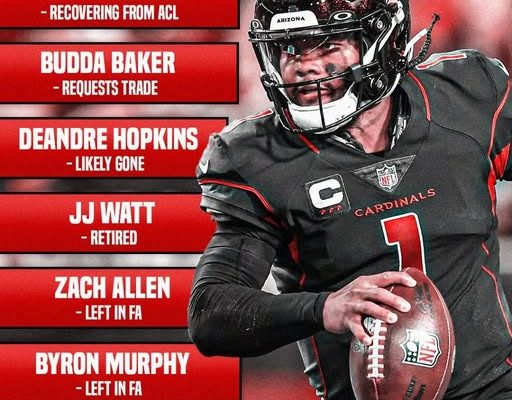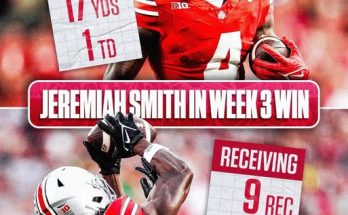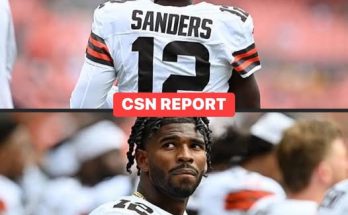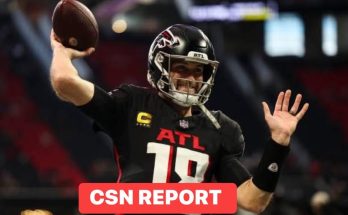The Arizona Cardinals are facing major setbacks, with various challenges disrupting their performance and stability
The Arizona Cardinals, one of the NFL’s most storied yet enigmatic franchises, are once again navigating through a storm of adversity. Just a few seasons removed from playoff contention, the team now finds itself at a crossroads. Injuries, coaching transitions, roster inconsistencies, and organizational uncertainty have combined to create a complex and concerning situation. As the 2025 NFL season approaches, the Cardinals are not only fighting to compete on the field—they’re also battling to preserve the identity and stability of the franchise itself.
In the ever-competitive landscape of the NFL, the margin for error is razor thin. Teams that thrive do so not only because of talent, but because of cohesion, continuity, and leadership. For the Cardinals, all of those pillars have been shaken. The cumulative effect of these challenges has created a fragile environment where performance is inconsistent, confidence is wavering, and progress remains elusive.
Perhaps the most significant and visible issue plaguing the team is the ongoing challenge at the quarterback position. Kyler Murray, once considered the future of the franchise and a dynamic dual-threat talent, has struggled to return to his pre-injury form. After suffering a torn ACL late in the 2022 season, Murray spent most of 2023 recovering and working his way back into football shape. His return in 2024 was met with hope, but the results were mixed. Flashes of brilliance were followed by moments of hesitation. His mechanics appeared rusty at times, and his rapport with a changing cast of receivers has yet to solidify.
The uncertainty surrounding Murray is more than just physical. There have been lingering questions about leadership, communication, and whether he and the coaching staff are on the same page. While publicly, the team expresses confidence in their quarterback, behind the scenes, it’s clear that the franchise is still evaluating whether he remains the long-term answer. This kind of doubt can trickle down to the locker room, creating an atmosphere where clarity and direction are sorely lacking.
Another area of concern is the wide receiver position. With the departure of veterans like DeAndre Hopkins in recent years, the Cardinals have attempted to reload with younger talent. The addition of Marvin Harrison Jr. in the 2024 NFL Draft was a major move, signaling Arizona’s intent to give Murray a premier target. While Harrison is undoubtedly talented and projects to be a future star, relying on a rookie to carry a thin and unproven receiving corps is a tall order.
Injuries and inconsistency have defined the rest of the receiver group. Michael Wilson has shown flashes but remains untested over a full season. Rondale Moore’s impact has been limited due to injuries and schematic fit, and Greg Dortch, while a high-effort player, doesn’t provide the elite-level threat needed to stretch defenses. The lack of veteran presence among the receiving corps leaves the offense vulnerable to stagnation, especially if Harrison experiences typical rookie growing pains or draws constant double coverage.
The offensive line is another major question mark. A unit that was once the subject of hope due to promising draft picks and veteran additions has instead become a revolving door of injuries, underperformance, and patchwork solutions. Protecting Murray is a top priority, especially given his size and mobility-based playstyle. Yet far too often in 2024, pressure came early and often, derailing drives and increasing the risk of further injury. The lack of cohesion up front has impacted not only the passing game but also the running attack, which has lacked consistency and punch.
Defensively, the Cardinals are caught in a rebuild that still feels incomplete. The team has invested heavily in young talent, hoping to build a fast, physical unit capable of matching up with the high-powered offenses of the NFC. However, the transition has been anything but smooth. Missed tackles, blown coverages, and inconsistent pass rush have plagued the unit. The defense often shows potential for a few drives before unraveling late in games, leading to close losses and mounting frustration.
The linebacker corps, once considered a strength, has faced regression and uncertainty. Zaven Collins has struggled to find his ideal role in the system, and Isaiah Simmons, once billed as a defensive Swiss army knife, has not developed into the game-changer the team hoped for when drafting him in the top 10. While young players like BJ Ojulari and Garrett Williams show promise, it remains unclear whether the defense has a true identity or a clear leader.
Veteran safety Budda Baker remains the heart and soul of the defense, bringing intensity and leadership each week. Yet even he has expressed frustration at the lack of results. It’s evident that Baker, despite his continued elite play, cannot singlehandedly fix the communication and execution issues plaguing the unit. Without more support around him, both in terms of talent and experience, the defense will continue to struggle to close out games and control the pace.
Coaching is another area under scrutiny. Jonathan Gannon, hired in 2023, was brought in with the expectation that his defensive pedigree and no-nonsense approach would help usher in a new era of competitiveness. To his credit, Gannon has brought structure and discipline to a team that previously lacked both. However, the results have been slow to come. His game management, play-calling decisions, and ability to adapt during games have all been questioned. The offense, led by coordinator Drew Petzing, has also drawn criticism for conservative play designs and an inability to fully unlock Murray’s skill set.
Leadership transitions and front office decisions have only added to the instability. General manager Monti Ossenfort is still relatively new to the role and has taken a measured, draft-focused approach to roster building. While this may yield long-term dividends, it has left the team in a talent-deficient state in the short term. Veteran departures, questionable free agent signings, and a reliance on young players still adjusting to the league have made it difficult for Arizona to compete with more established franchises.
Compounding all these issues is the growing sense of apathy among a once-hopeful fanbase. Attendance has dipped. Local support, while still strong, has been tested by years of inconsistency and unmet expectations. The atmosphere at State Farm Stadium is not what it was during the team’s last playoff push, and many fans are beginning to wonder when, or if, the team will finally take that next step forward.
There are, of course, still reasons for hope. The core of young talent—including Harrison, McBride, Ojulari, and others—gives the Cardinals a foundation to build upon. Kyler Murray, if fully healthy and supported, remains one of the most electrifying players in the league. The 2025 NFL Draft and upcoming free agency provide opportunities to address roster holes and reinforce the team’s vision. But in order for those opportunities to mean anything, the Cardinals must first stabilize the ship.
That means creating a clear and consistent identity on both sides of the ball. It means establishing leadership in the locker room—not just through coaches, but through players willing to set the tone every day. It means improving the offensive line, adding depth at wide receiver, and revamping the defense into a cohesive unit. Above all, it means making smart, strategic decisions that prioritize long-term success over short-term patchwork.
The 2025 season will be pivotal. If the Cardinals continue to underperform, the calls for change—whether at quarterback, head coach, or front office—will only grow louder. If, however, the team can weather the storm and start turning potential into production, the setbacks of today could become the fuel for a compelling comeback story.
For now, though, the reality remains that the Arizona Cardinals are a franchise in flux. Major setbacks have tested their resolve, disrupted their development, and cast a shadow over their immediate future. How they respond—on the field, in the locker room, and in the front office—will define not just this season, but the direction of the franchise for years to come. One thing is clear: the time for excuses has passed. The time for action is now.



